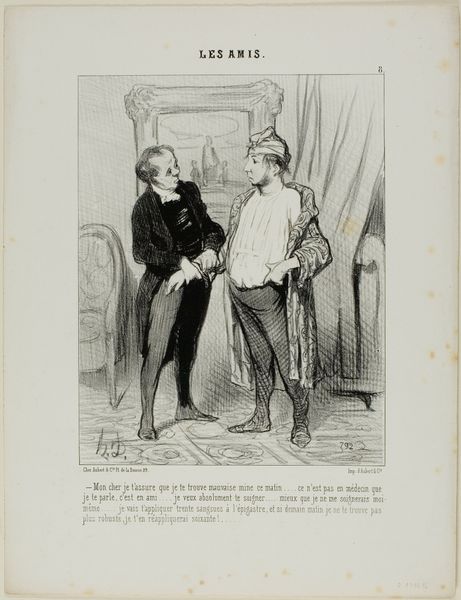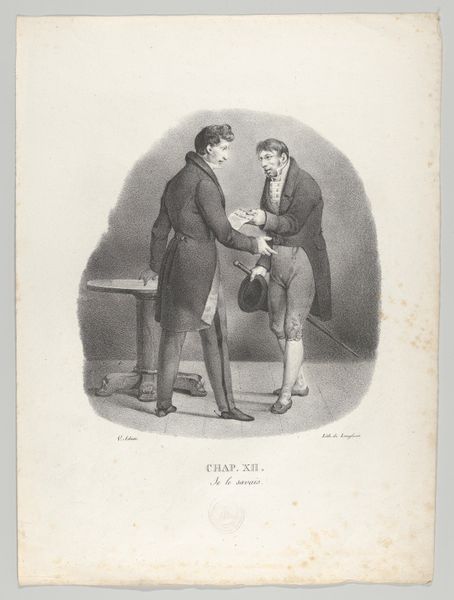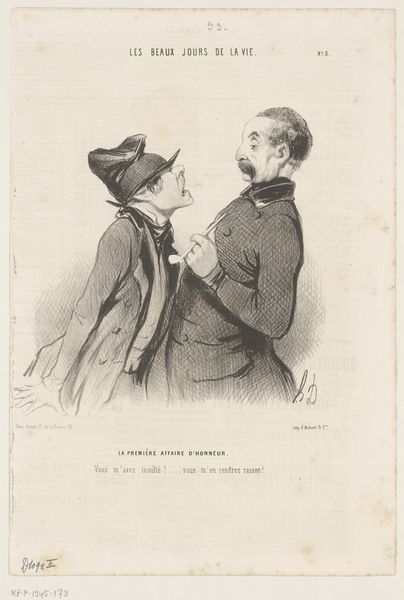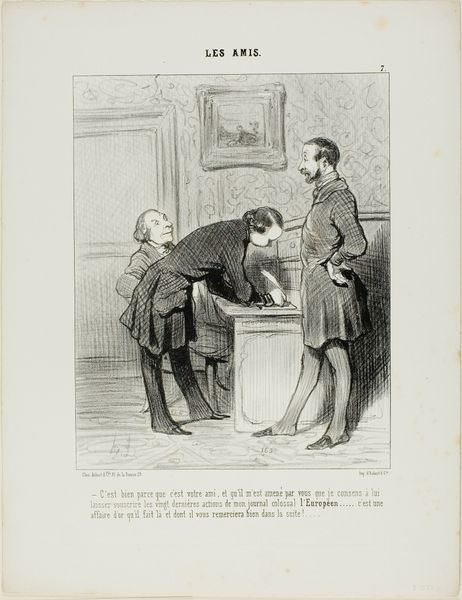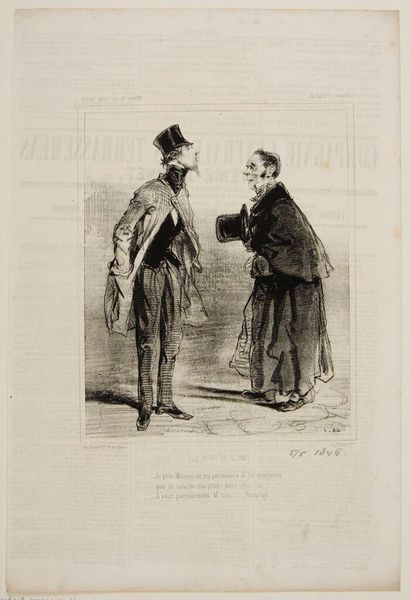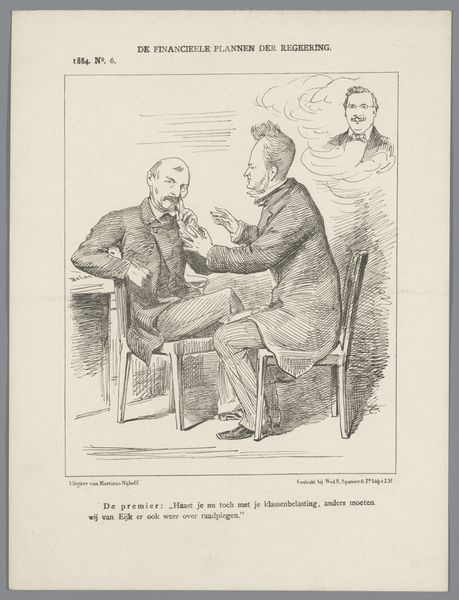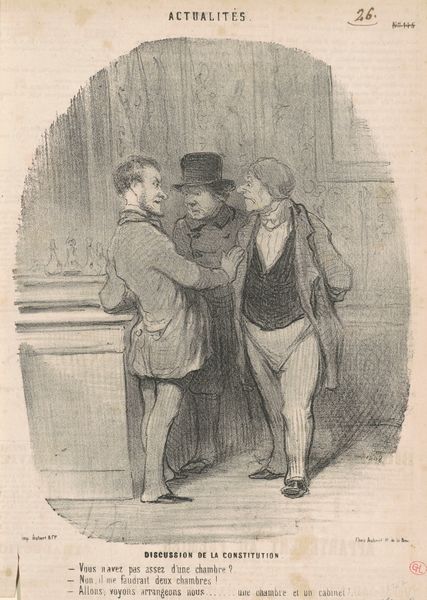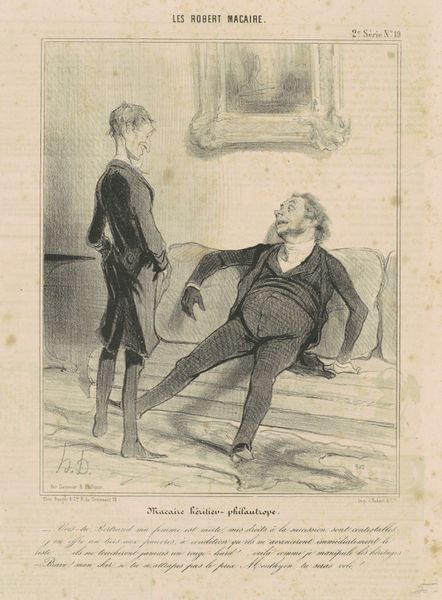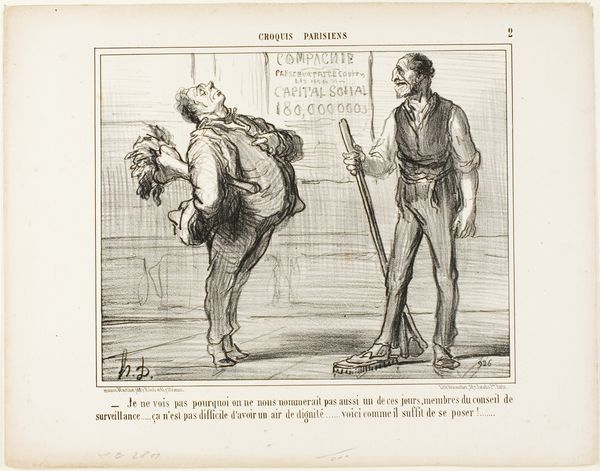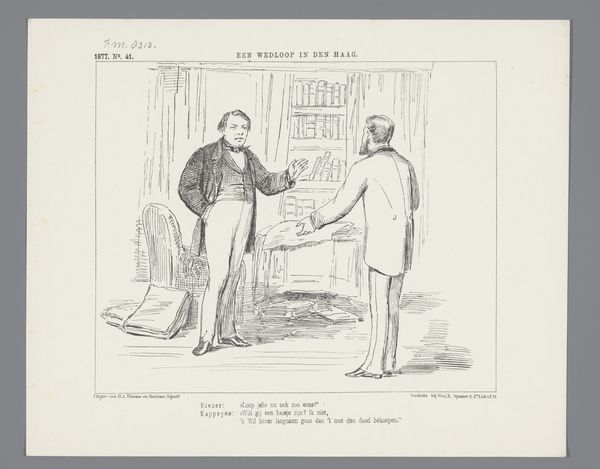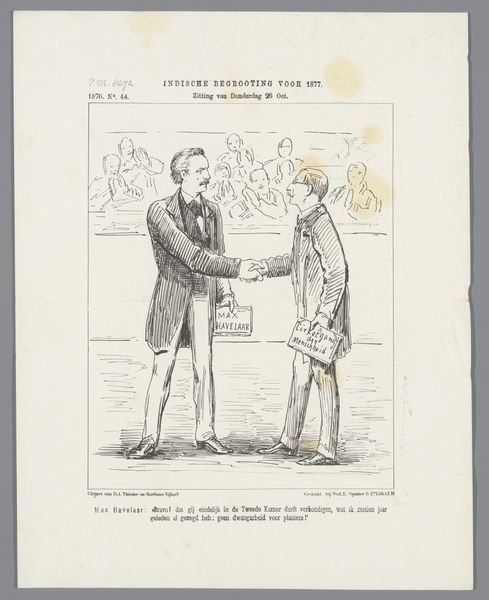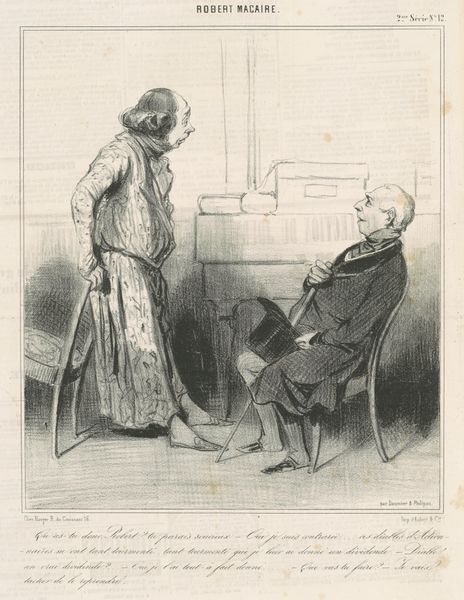
The Bluestocking's Husband. “Monsieur, my wife has been inspired since this morning: it is impossible to see her. As you can see, I have to give my full attention to the fruit of our most recent collaboration!,” plate 46 from Moeurs Conjugales 1842
0:00
0:00
drawing, lithograph, print, paper
#
drawing
#
lithograph
# print
#
caricature
#
paper
#
romanticism
#
genre-painting
Dimensions: 239 × 192 mm (image); 344 × 271 mm (sheet)
Copyright: Public Domain
Editor: This lithograph on paper, titled "The Bluestocking's Husband," was created by Honoré Daumier in 1842. I find it quite funny; there's a sense of awkwardness and exasperation emanating from the man holding the baby. What's your take on the cultural context surrounding this image? Curator: It’s a biting commentary on gender roles and intellectualism in 19th-century France. Daumier often used his art to critique societal norms. The title itself is key – "bluestocking" was a derogatory term for intellectual women, suggesting their interests led to neglecting domestic duties. See how the man, burdened with the child, almost apologetically explains his wife's unavailability to the visitor? Editor: So, the "fruit of our most recent collaboration," as he puts it, implies the child is a distraction from her intellectual pursuits, according to society's view at the time? Curator: Precisely! The humor highlights the societal pressure on women to conform to domestic expectations, even at the expense of their intellect. Notice how Daumier uses caricature, exaggerating features to emphasize the perceived absurdity of the situation. Consider the visual language as a kind of political statement, reflecting the ongoing debates about women's role in society. How might the print's wide circulation as part of "Moeurs Conjugales" series impact the public perception of such unions? Editor: I hadn’t thought about how mass production might have amplified Daumier’s message. So, it's not just a funny image, but a reflection of a broader social anxiety about changing gender dynamics and women’s education. Curator: Exactly. By circulating these prints, Daumier engaged with the politics of imagery. He wasn’t just making art, he was shaping public opinion. Editor: Wow, I'm never going to look at caricatures the same way. Thanks for showing me there's so much more beyond the surface humor. Curator: And I am glad to revisit such socio-political statements!
Comments
No comments
Be the first to comment and join the conversation on the ultimate creative platform.
